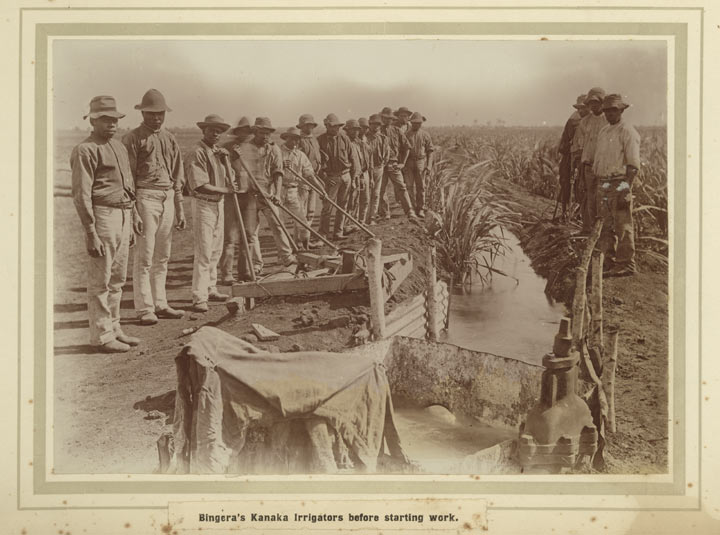 Pacific Islanders at irrigation channels, c1905
Pacific Islanders at irrigation channels, c1905
TLF ID R8192
This sepia photograph shows around 20 Pacific Islander men posed on either side of a narrow irrigation channel in a cane field at Bingera Plantation near Bundaberg in Queensland. Some are holding long-handled hoes or shovels. A junction of the irrigation channel is visible in the foreground with equipment necessary to divert the water. The photograph is captioned 'Bingera's Kanaka Irrigators before starting work'. The word 'Kanaka' was a derogatory term for South Pacific Islanders.
